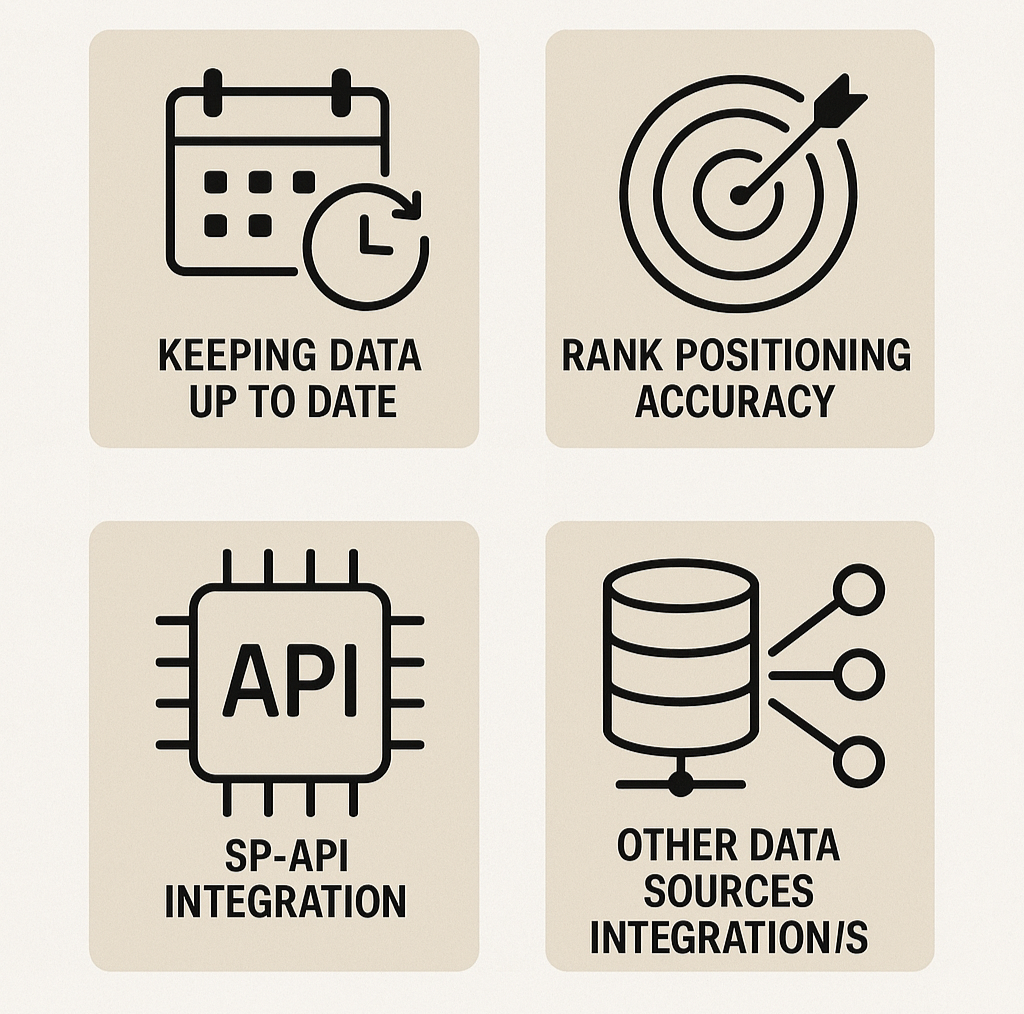
In the world of Amazon seller intelligence, data accuracy and real-time insights are critical. Whether you’re a seller, an aggregator, or a software provider, having an effective rank tracker can make the difference between optimized sales strategies and missed opportunities. However, implementing a reliable Amazon rank tracker comes with a unique set of challenges.
To put things into perspective, imagine a seller who spends months optimizing their product listings, only to realize that their rank fluctuates unpredictably, making it impossible to gauge success accurately. This is where a high-performance rank tracker becomes indispensable. In this case study, we’ll walk you through our journey of building a robust Amazon rank tracker, highlighting the technical hurdles we overcame and the expertise we applied.
The Challenges of Building an Amazon Rank Tracker
When we set out to develop a comprehensive Amazon rank tracker, we quickly encountered a few core challenges that many in the industry face:
1. Keeping Data Up to Date
Amazon rankings fluctuate frequently due to competition, sales velocity, and algorithm updates. Ensuring that our system consistently fetched the latest rankings without gaps or inconsistencies was a major challenge. We had to balance real-time updates with API limitations, which required smart scheduling and data caching mechanisms.
2. Rank Positioning Accuracy
A rank tracker is only as good as the accuracy of its data. Given Amazon’s dynamic environment, ensuring that our rank calculations reflected real search results was crucial. We had to handle variations in keyword ranking based on search personalization, geography, and device type. To address this, we implemented multi-source validation, tracking multiple variations of keyword searches, and refining our algorithm to detect anomalies.
3. SP-API Integration and Bypassing Rate Limits
Amazon’s Selling Partner API (SP-API) provides access to valuable seller and product data but comes with strict rate limits. Frequent API calls could result in throttling, causing delays in data retrieval. To overcome this, we implemented:
- Optimized API request batching to reduce unnecessary calls
- Intelligent scheduling algorithms to distribute API requests more evenly
- Fallback mechanisms to retry failed requests within allowed limits
4. Other Amazon Data Sources Integrations
Beyond the SP-API, we needed to aggregate data from multiple sources, including web scraping, third-party APIs, and internal data warehouses. This required a hybrid data-fetching strategy that allowed us to combine official Amazon data with alternative methods while maintaining reliability and compliance.
5. Optimizing Data Storage for Scalability
With a growing number of products and keywords being tracked, data storage became a significant concern. We designed a scalable data architecture by:
- Utilizing time-series databases to efficiently store and query ranking trends
- Implementing compression techniques to reduce storage costs
- Using distributed processing to handle large datasets without performance bottlenecks
Our Approach: A Scalable and Efficient Rank Tracker
To address these challenges, we built an Amazon rank tracker that combines robust engineering solutions with strategic data processing methodologies. Our approach included:
- Parallelized Data Fetching: We leveraged parallel processing to gather ranking data efficiently without violating API rate limits.
- AI-Powered Anomaly Detection: Our system automatically flags inconsistencies in ranking trends, ensuring data reliability.
- Customizable Tracking Intervals: Users can set flexible update intervals based on their business needs, balancing real-time updates with cost efficiency.
- Cross-Source Validation: We compare ranking data from multiple sources to eliminate discrepancies and provide more accurate insights.
The Impact: Delivering Reliable Amazon Rank Tracking
By implementing these solutions, we successfully built a rank tracker that delivers:
- High-frequency updates without excessive API throttling
- Accurate ranking insights tailored to different search scenarios
- Scalable architecture capable of handling thousands of keywords and ASINs
- Improved seller intelligence, empowering users with actionable data
Conclusion
Building an Amazon rank tracker is not just about retrieving data—it’s about ensuring accuracy, scalability, and efficiency while navigating API restrictions and evolving market dynamics. Our expertise in solving these challenges has allowed us to create a solution that stands out in the competitive world of Amazon seller intelligence. If you need help in optimizing your Amazon Rank Tracker or building one from scratch, please don’t hesitate to reach out. Our team of experts are here to help you with the deepest expertise in the industry.






